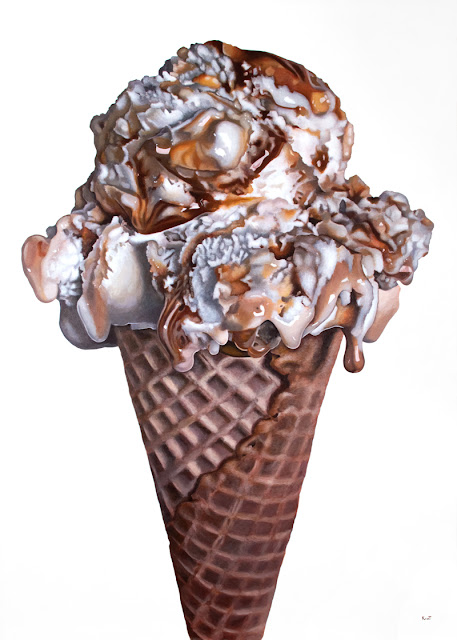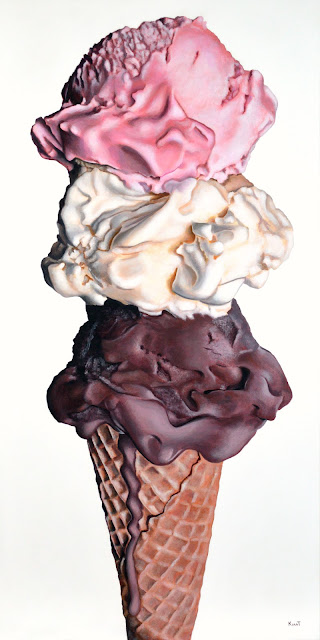Step by Step Photos of Painting Strawberries in Acrylic
"Strawberries," acrylic on panel, 6" x 6".
When I first began painting a few years ago, I did an oil painting of strawberries in one of those plastic containers. While it turned out pretty good, it was one of the most frustrating experiences I had yet had in painting - strawberry paintings are not for the faint of heart. But this week, I picked up some organic strawberries that were just so lovely I couldn't avoid painting them.
I knew going in that this was going to be a pretty complicated piece, so I photographed many of my steps as I painted. I had to scour the Internet to find many of the techniques I've learned to use, often adapting oil painting methods to my acrylic process, so I am happy to share here with other artists who may be experiencing the same thing.
And this time - this painting took me about 10 hours, whereas the other
strawberry painting took two to three times that. So hurray for that!
Enjoy the photos!
I think I actually used this very small brush for the entire painting. If you're wondering, it's a 5/0 synthetic sable brush.
I'm working on an Aquabord panel from Ampersand, but sometimes I prefer Gessobord. The difference to me is that with the Aquabord, my paint layers absorb more readily, especially the lower layers, meaning I have less texture in my overall piece, which I prefer.
As I begin to add the color, I work in very thin glazes, using straight matte medium most of the time, not water, because I want to build up a rich level of transparency, so the light moves through the layers of paint. This process requires quite a bit of patience, but it is, to me, able to create a far more accurate and pleasing result than I can get with direct painting in acrylics.
If I remember correctly, the only colors I used in glazing the strawberries were napathol red, cadmium yellow, cadmium orange and ultramarine blue. Purer colors strategically layered over one another to create optical colors helps to create the luminosity I'm looking for. I also don't want to dull the colors with white, so I'm trying to make the white of the background work for me, and get color intensity by lots of layers.
I use both water and matte medium to thin and spread the paint at this stage. I also go back in with a darker mix of raw umber and payne's gray in the darkest areas and bring out the white highlights, too.
The key here is to not get lazy. Work back and forth to keep refining details and shapes and colors in relationship to one another. Some artists can work more systematically, like in a grid. While I've used a grid on occasion, I really find that I need to be looking at the entire piece, jumping around constantly, to get it to all work together.
My berries are finished at this point. I've gone in a refined the highlights, added lots of glazes and made sure my seeds are more convincing.
My berries are finished at this point. I've gone in a refined the highlights, added lots of glazes and made sure my seeds are more convincing.
Stems are done and so is the piece! It was a great exercise in proving to myself that even a complex subject can become possible when you have patience and follow a good process. Thanks for looking!










